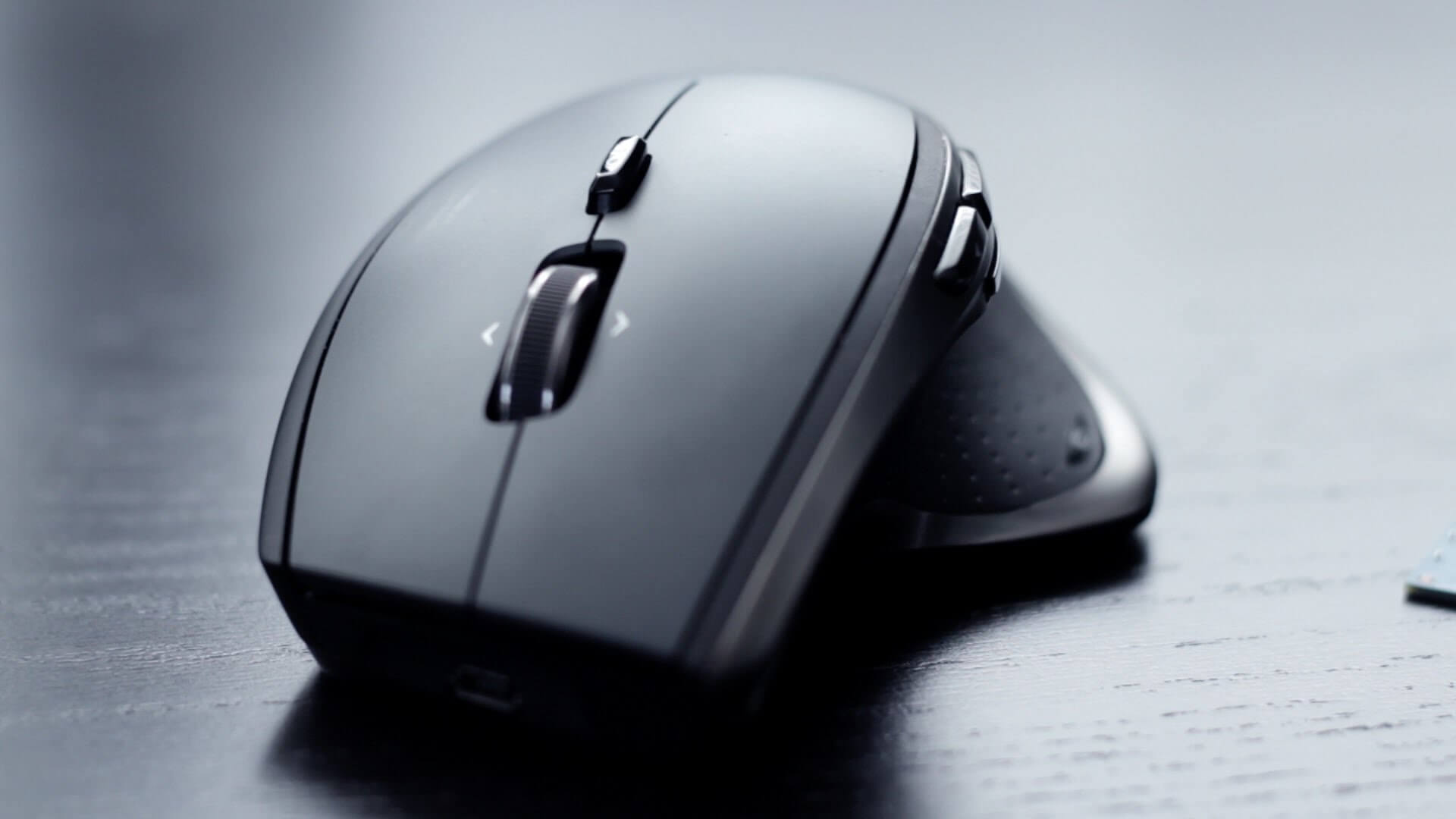Logitech Performance Mouse MX
Founded in 1981, Logitech is considered one of the elite peripheral manufacturers in the world. Anyone that has used a computer for business or pleasure has likely used a Logitech product at some point. Along with Microsoft and Razer, Logitech was represented in our last mouse round-up with their G5 and G9 gaming mice. Today we have two more Logitech mice to share with you, the Gaming Mouse G500 and the Performance Mouse MX.
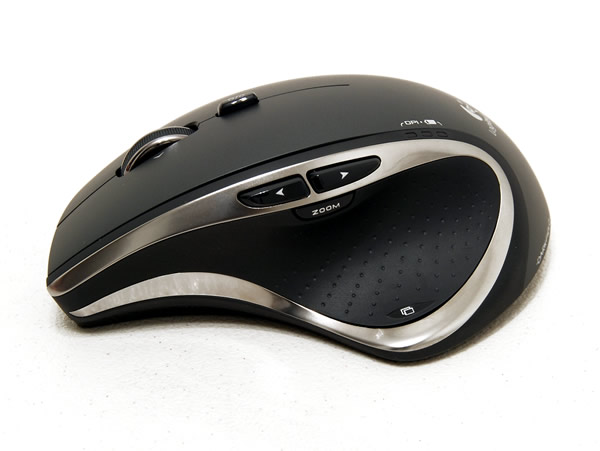
We will start with the latter which is the successor to the wildly popular MX Revolution Mouse that was released several years ago. At first glance, these two look very similar and I suppose for the most part they are. The upper surface of the Performance mouse is covered in a hard gray plastic while the right side has a smooth rubber coating. The left side of the mouse features a black textured rubber surface that is surrounded by a silver accent piece.
Buttons include the right and left mouse click buttons, clickable scroll wheel that also tilts left and right, a button behind the scroll wheel that locks / unlocks the scroll wheel, two thumb buttons on the left side with a third button labeled "Zoom" under them and finally another button "hidden" under the textured thumb rest area.
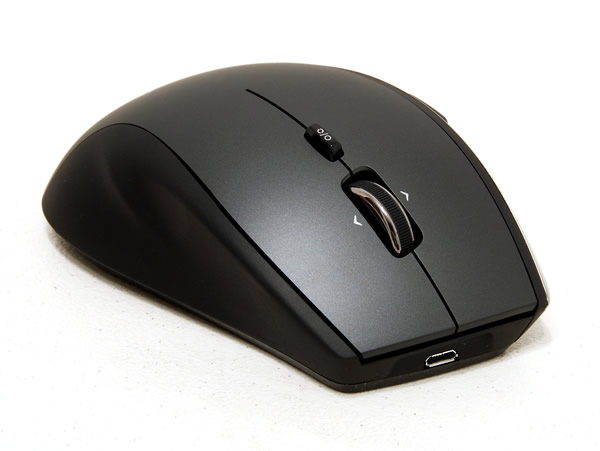
Those familiar with the MX Revolution will be happy to know that the hyper-fast scroll wheel feature has returned, but operates a bit differently. With this feature users can disengage the traditional clicking scroll wheel mechanism and allow the wheel to scroll unrestricted, which is useful for scrolling through long documents or files at "hyper" speed.
On the Revolution, hyper-fast scrolling could be activated by simply flicking the scroll wheel. The mouse would disengage the wheel allowing free spin. Once it slowed down, it would reengage and operate like a traditional wheel. The Performance Mouse MX gets rid of this automatic feature and instead requires users to manually enable or disable hyper-fast scrolling by pressing the button behind the scroll wheel – which is a step backwards in terms of usability.
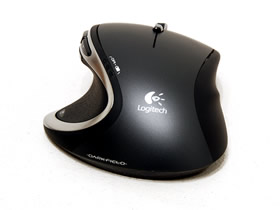
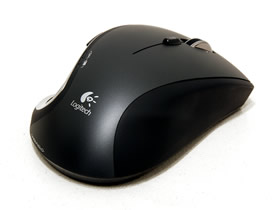
A battery / DPI indicator is positioned on the mouse between where your thumb and pointer finger rest, although it isn't 'stealthed' like it was on the Revolution. On the bottom of the mouse are three Teflon mouse feet, an on / off switch, Darkfield Laser Tracking system and the battery compartment. Darkfield is Logitech's answer to Microsoft's BlueTrack system that allows the mouse to work on virtually any surface. That said, Logitech takes it one step further by enabling you to use the mouse on a clear glass surface, which was quite impressive.
The battery system on the Performance MX one-ups that of the old Revolution too. The new mouse uses a AA NiMH battery that is removable and can be replaced. Logitech suggests an 1800 mAh minimum replacement.
Charging the Performance MX is also much more convenient than with the old model. Instead of having to mount the mouse in a dock, now you can simply plug a USB cable into the front of the mouse and continue using it, much like the Razer Mamba and Microsoft Sidewinder X8. Optionally, you can charge the mouse while away from your computer by using the included power adapter.
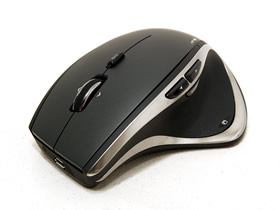
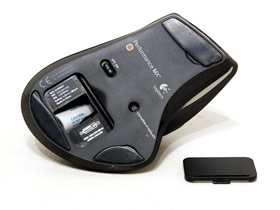
Logitech includes one of their Unifying Adapters with the Performance MX. This tiny receiver can be paired with up to six compatible Logitech mice and keyboards at the same time. While not many of you are going to use six devices at once, I can see notebook users carrying maybe three or so. For example, you could have one small notebook mouse for mobile use, and a regular size keyboard and mouse combo for home use. The tiny receiver was designed for notebook users to install and forget. Since it's so small, you don't have to bother unplugging it each time you transport your computer.
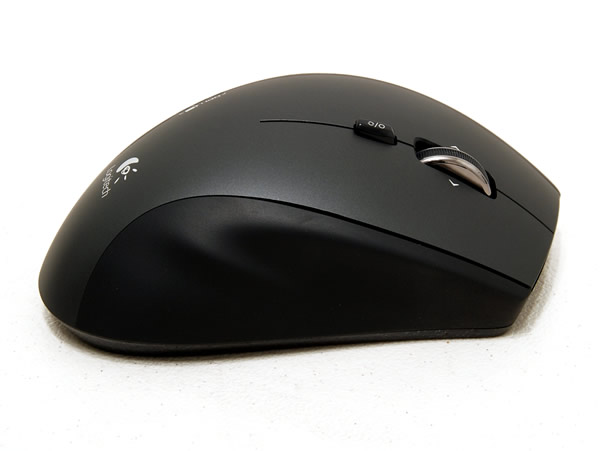
The SetPoint software has a clean look and is very well laid out. You can remap each button (except the hyper-scroll button) to any of several presets or enter in your own keystroke. Other customizable options include pointer settings, battery information, game detection settings and software version data. You can set custom DPI levels in the key remapping section.
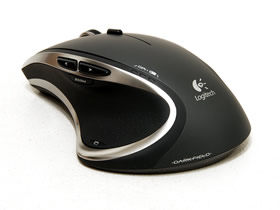
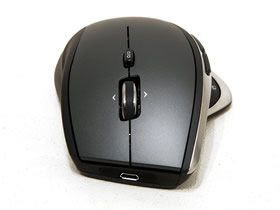
As for general use and mild gaming, the Performance MX certainly gets the job done. The mouse slides around easily on my mouse pad and there were no issues with the tracking sensor. Comfort is another story, however. Although the Performance MX looks very similar to the original MX Revolution, it is a bit larger and shaped differently – changes I don't particularly care for. The mouse feels too large under my hand and the shape simply didn't feel comfortable, even after a few days of use. The arch on the Performance MX is a bit more extreme than the one in its predecessor.
While the Performance MX is a good mouse with a wealth of updated features, some of the best features from the original MX Revolution were abandoned or crippled in some way – for example, the hyper scrolling functionality. On the other hand, it makes up for it with the new tracking system and the ability to change depleted batteries with a spare AA when the charging cable isn't handy. As of writing, the Logitech Performance MX Mouse retails for $80 on Amazon.
Pros:
|
Cons:
|
